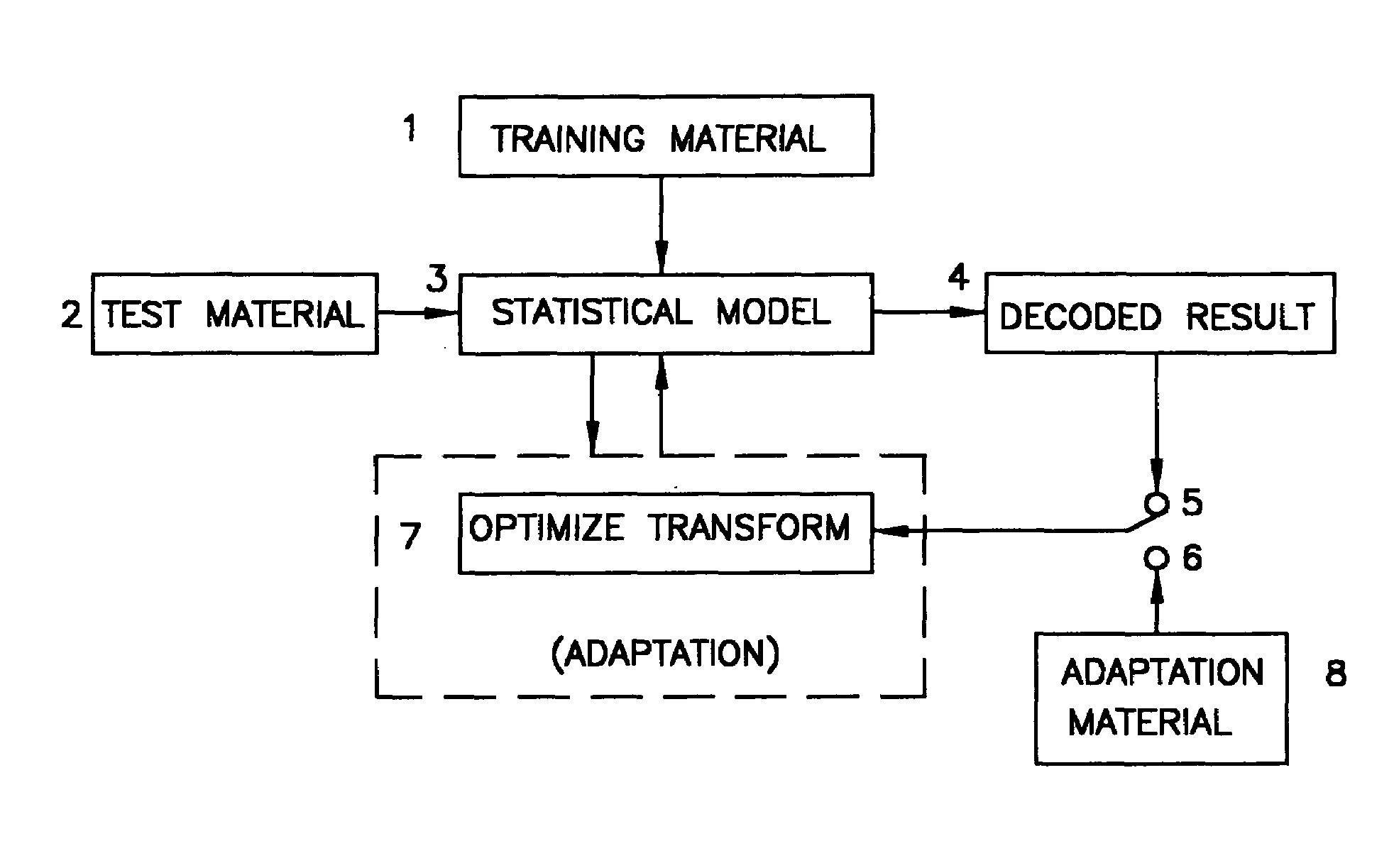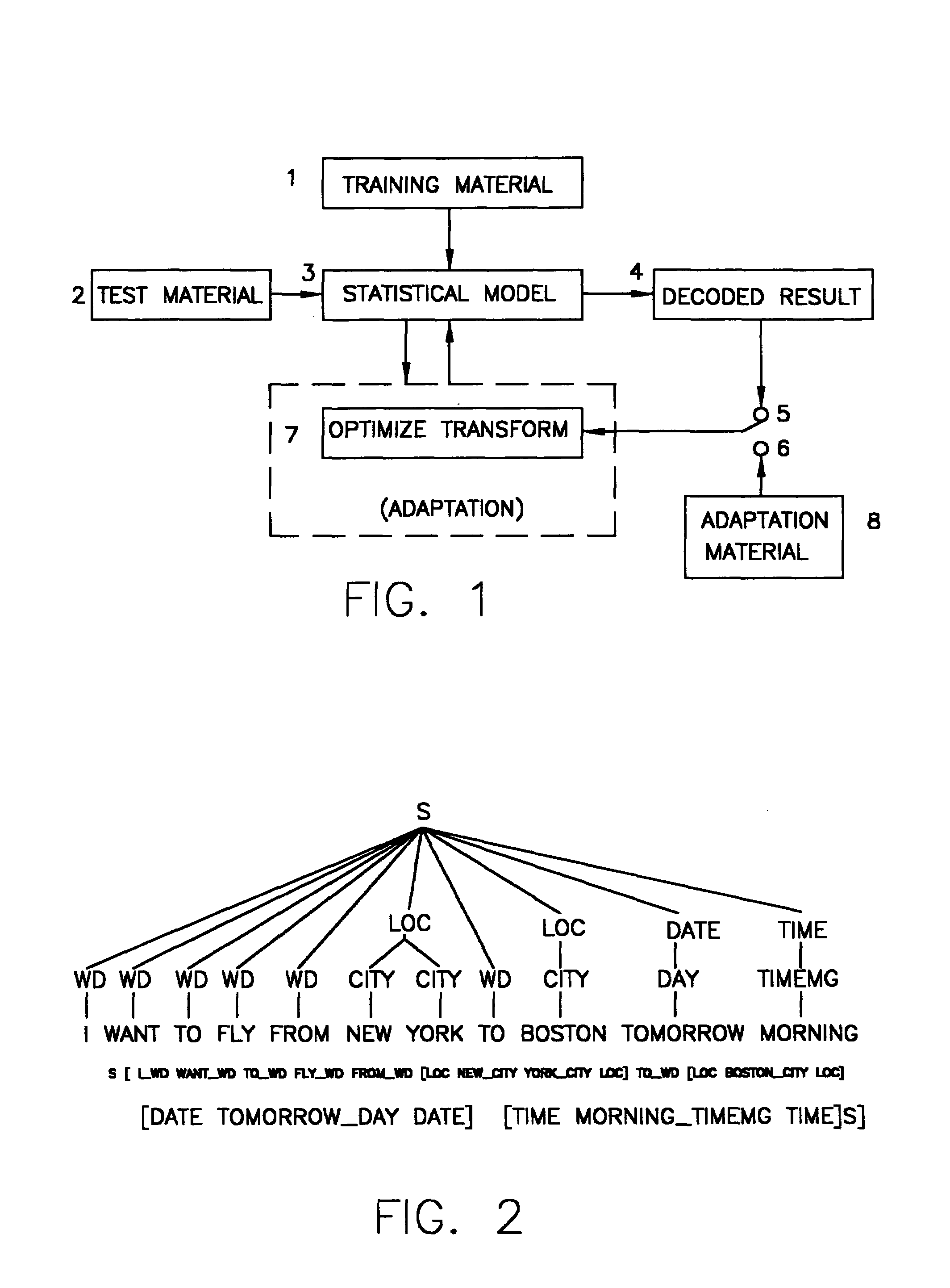Adaptation of statistical parsers based on mathematical transform
- Summary
- Abstract
- Description
- Claims
- Application Information
AI Technical Summary
Benefits of technology
Problems solved by technology
Method used
Image
Examples
Embodiment Construction
[0014]Referring to FIG. 1, a statistical parser is typically trained with a corpus of annotated sentences 1. The statistical model, or the parser, is represented by a set of a finite number of probability mass functions (pmf's) 3 which can be used to rank parses of an un-annotated sentence, or to test material at box 2. The results are shown as “decoded result”4.
[0015]The accuracy of the parser can be improved by adapting the model parameter in box 3. In this connection, FIG. 1 illustrates a general framework of adapting a statistical parser, which is applicable to both supervised adaptation and unsupervised adaptation. “Supervised adaptation” implies that there is a set of annotated adaptation data 8 available. In the setup of unsupervised adaptation, however, only the unadapted model and test material are available.
[0016]In both supervised and unsupervised adaptation, the unadapted model and the adapted model are related to each other by one or more transforms. At least one presen...
PUM
 Login to View More
Login to View More Abstract
Description
Claims
Application Information
 Login to View More
Login to View More - R&D
- Intellectual Property
- Life Sciences
- Materials
- Tech Scout
- Unparalleled Data Quality
- Higher Quality Content
- 60% Fewer Hallucinations
Browse by: Latest US Patents, China's latest patents, Technical Efficacy Thesaurus, Application Domain, Technology Topic, Popular Technical Reports.
© 2025 PatSnap. All rights reserved.Legal|Privacy policy|Modern Slavery Act Transparency Statement|Sitemap|About US| Contact US: help@patsnap.com



